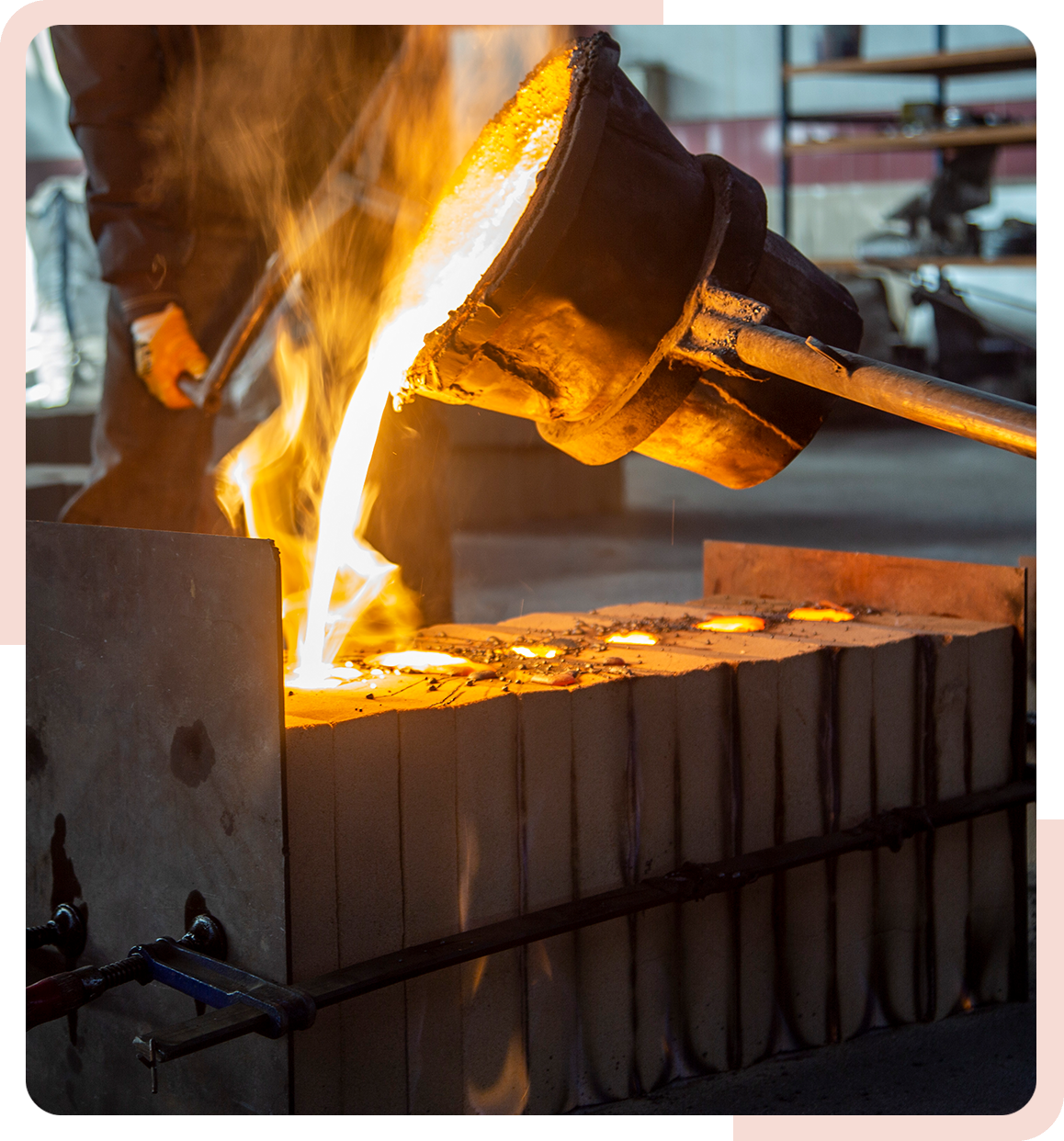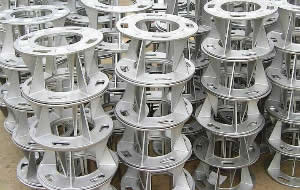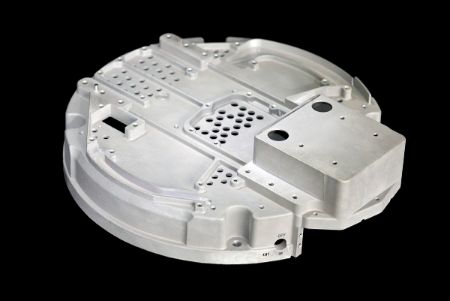Typical Problems in aluminum casting and Practical Solutions Explained
Wiki Article
Aluminum Casting Explained: Trick Realities and Insights for Sector Professionals
Aluminum casting works as a crucial procedure in contemporary production, shaping elements across various sectors. Its diverse techniques, such as sand and die casting, satisfy different production needs. The unique homes of aluminum alloys boost their applicability, yet tests continue to be in preserving top quality and efficiency. Understanding these aspects is crucial for industry specialists. What are the most current improvements and finest practices that can even more optimize this process?Review of Aluminum Casting Processes

Key components of aluminum casting procedures include the prep work of mold and mildews, which might be made from sand, steel, or ceramic materials, depending upon the intended use. Furthermore, temperature control is crucial to guarantee appropriate melting and solidification of aluminum.
The casting procedure enables elaborate layouts and can achieve high degrees of dimensional precision. As soon as cooled down, the castings may undergo ending up procedures such as machining or surface area therapy to fulfill particular efficiency criteria. In general, aluminum casting acts as a versatile production technique, effectively satisfying the diverse demands of different sectors.
Sorts Of Aluminum Casting Techniques
In the domain of aluminum casting, numerous techniques are employed to attain different outcomes. Sand casting techniques offer adaptability and cost-effectiveness for intricate shapes, while die casting processes offer high precision and performance for automation. Understanding these techniques is crucial for selecting the ideal method based on task requirements.Sand Casting Techniques
Sand casting methods represent a basic approach in aluminum casting, where sand is utilized as a mold and mildew material to shape molten metal. This procedure includes developing a pattern from the wanted component, which is after that put in a sand mixture to create a mold. The sand is compressed around the pattern, and after elimination, it produces a dental caries in the form of the part. Molten aluminum is poured into this dental caries, enabling it to cool and strengthen. One significant benefit of sand casting is its adaptability; it can suit complex shapes and big elements. In addition, the materials utilized are relatively low-cost, making it an obtainable alternative for different manufacturing applications in the aluminum market.Die Casting Processes
Die casting processes are a famous approach for forming aluminum components, making use of high-pressure methods to force liquified metal right into precisely engineered molds. This procedure is specifically favored for its capability to produce complex forms with limited tolerances and a smooth finish. There are 2 main kinds of die casting: hot chamber and chilly chamber. Warm chamber die casting appropriates for steels with reduced melting points, permitting faster production prices. Alternatively, chilly chamber die casting is ideal for higher melting point metals, calling for a different melting heating system. Both approaches enhance performance and reduce material waste, making them vital in vehicle, aerospace, and consumer items industries. Comprehending these processes aids specialists select the most ideal technique for their details applications.Product Characteristic of Aluminum Alloys

Strength and Sturdiness
Stamina and resilience are critical qualities of aluminum alloys that make them suitable for numerous casting applications. These products show a positive strength-to-weight ratio, permitting the creation of lightweight yet durable parts. With regard to tensile stamina, details aluminum alloys can be engineered to withstand considerable tons without warping. This building is specifically vital in industries such as aerospace and automotive, where efficiency and safety are paramount. Additionally, aluminum alloys frequently preserve their mechanical residential properties under diverse temperature conditions, guaranteeing regular performance. The innate ductility of these alloys additionally enables effective shaping during the casting process, making it less complicated to generate intricate geometries. Generally, the strength and durability of aluminum alloys add substantially to their widespread usage in advanced applications.Deterioration Resistance Characteristics
While aluminum alloys are prized for their stamina and lightweight properties, their rust resistance is another important attribute that improves their suitability for numerous applications. Aluminum normally develops a protective oxide layer when subjected to dampness, which helps to stop further oxidation. This intrinsic building makes aluminum alloys specifically valuable in atmospheres susceptible to rust, such as marine and industrial settings. In addition, different alloy compositions can affect resistance degrees, with particular alloys specifically crafted to enhance this particular. Therapies like anodizing can additionally improve deterioration resistance by thickening the oxide layer. Recognizing the rust resistance of aluminum alloys is essential for industry professionals when choosing materials for tasks needing sturdiness and longevity in difficult environments.Benefits of Aluminum Casting in Manufacturing
Aluminum casting offers countless advantages in production, making it a recommended choice for various industries. One significant advantage is its lightweight nature, which adds to lowered transport costs and improved energy performance in end products. In addition, aluminum's exceptional thermal and electrical conductivity boosts capability in applications calling for heat dissipation or electric conduction.The product's capacity to be cast right into detailed forms enables for layout flexibility, lowering the demand for extra machining procedures. Furthermore, aluminum casting displays premium corrosion resistance, bring about longer product lifespans and lower upkeep costs.

Typical Applications of Aluminum Castings
The adaptability of aluminum casting allows its prevalent use across different industries. Usual applications include automotive components, where light-weight and corrosion-resistant elements, such as engine blocks and transmission real estates, boost vehicle efficiency. In the aerospace field, aluminum spreadings are made use of for structural components, supplying toughness without adding substantial weight.
Additionally, the electrical sector gain from aluminum spreadings in producing rooms and warmth sinks, where thermal conductivity is vital. The consumer products industry also includes aluminum castings in products like kitchenware, furniture, and attractive items, incorporating aesthetics with performance.
In addition, the building market utilizes aluminum castings for building components, home window frameworks, and components, which provide durability and style versatility. Generally, the diverse applications of aluminum spreadings emphasize their value in contemporary manufacturing, adding to innovations in effectiveness and product layout throughout multiple fields.
Advancements and Technological Advancements
As industries continue to advance, technologies in aluminum casting modern technology are transforming manufacturing procedures and product capacities. Innovations in 3D printing and additive manufacturing have actually made it possible for the production of intricate geometries that were formerly difficult to achieve with standard methods. These innovations allow for fast prototyping, lowering preparations and expenses.In addition, renovations in mold style and materials have enhanced the casting procedure by boosting performance and reducing waste. The assimilation of clever manufacturing techniques, such as IoT gadgets and real-time information analytics, permits for better tracking and optimization of manufacturing specifications, resulting in higher top quality results.
Developments in aluminum alloys provide boosted stamina, deterioration resistance, and lightweight properties, catering to the expanding needs in automobile and aerospace sectors. Jointly, these technologies are not only enhancing efficiency yet additionally fulfilling the strenuous criteria of contemporary engineering applications.
Best Practices for Quality Control in Aluminum Casting
Guaranteeing top notch outputs in aluminum casting calls for adherence to best methods that encompass different stages of the manufacturing process. Initially, detailed material examination is vital to validate the high quality of aluminum alloys utilized, as contaminations can greatly impact the final item. Implementing accurate melting and pouring techniques minimizes flaws; preserving ideal temperatures avoids oxidation and promotes uniformity.Mold style plays an essential function; making use of computer-aided design (CAD) can boost accuracy and decrease human error. Normal surveillance of the cooling procedure is vital to avoid bending and shrinkage. In addition, making use of non-destructive screening methods, such as ultrasonic or X-ray evaluations, aids identify inner imperfections without harming the components.
Establishing a feedback loophole with engineers and drivers fosters continual enhancement, guaranteeing that high quality control actions evolve alongside technical advancements. By following these best methods, makers can enhance the integrity and efficiency of aluminum spreadings.
Frequently Asked Questions
What Are the Ecological Effects of Aluminum Casting?
The environmental impacts of aluminum casting include significant power intake, greenhouse gas exhausts, and potential water pollution from foundry procedures. In addition, bauxite mining for aluminum ore can cause environment devastation and soil degradation.Exactly How Does Aluminum Casting Compare to Other Metal Casting Processes?
Aluminum casting normally offers advantages in light-weight elements and rust resistance contrasted to other processes, such as iron or steel casting, which might give higher toughness yet lead to heavier and much less corrosion-resistant products. - Precision aluminum castingWhat Are Usual Issues in Aluminum Castings and Their Reasons?
Common issues in aluminum castings consist of porosity, shrinking, and inclusions. Causes typically stem from incorrect pouring techniques, inadequate mold and mildew design, or contamination of the molten steel, impacting the final item's stability and performance.What Safety Preventative Measures Should Be Taken During Aluminum Casting?
During aluminum casting, necessary security preventative measures include putting on protective gear, ensuring appropriate ventilation, preserving a tidy workspace, handling liquified steel with care, and complying with well established methods to lessen risks of check here burns, inhalation threats, and crashes.How Can I Enhance the Performance of My Aluminum Casting Procedures?
To improve performance in aluminum casting procedures, one need to maximize mold layout, enhance product handling, employ automated procedures, conduct normal maintenance on devices, and purchase staff member training to improve abilities and productivity.Numerous techniques exist, aluminum casting includes several key procedures that cater to different applications and requirements. Key elements of aluminum casting processes consist of the preparation of molds, which may be made from sand, metal, or ceramic products, depending on the meant usage. Sand casting methods stand for a basic approach in aluminum casting, where sand is made use of as a mold material to shape liquified steel. As markets proceed to progress, technologies in aluminum casting modern technology are changing production processes and item capacities. Making sure high-quality outputs in aluminum casting needs adherence to ideal practices that include different stages of the production process.
Report this wiki page